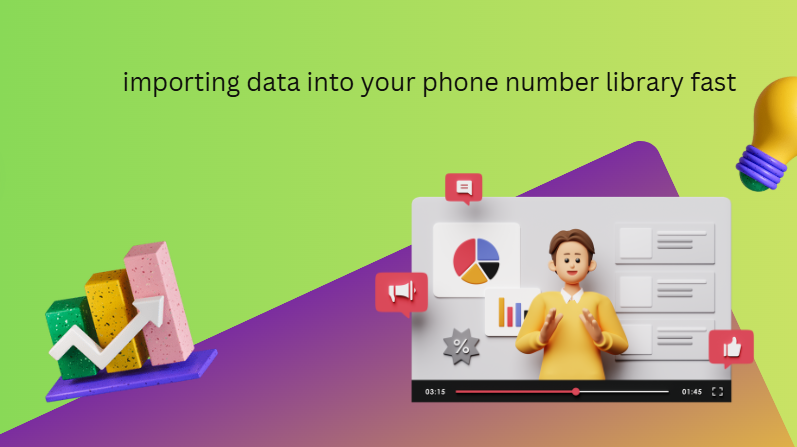Preparing Data for Quick and Accurate Import
Before initiating the process of importing data into your phone number library, proper preparation is key to achieving both speed and accuracy. Start by ensuring your data is clean—remove duplicate entries, standardize formats, and verify that country codes, area codes, and extensions are correct. A consistent format across all entries will prevent complications during the import process, especially when moving data between systems with different formatting rules. For example, a spreadsheet with inconsistent formats like “(123) 456-7890” and “123-456-7890” may confuse the import tool, causing delays or errors. Organizing data into clear phone number library columns such as Name, Phone Number, Email, and Notes will make the process faster and smoother. If your source data comes from multiple systems, merge them into a single master file to avoid multiple imports, which could waste time and increase the chance of mistakes. Additionally, consider creating a small test file to run a trial import, ensuring that the format is compatible and that all fields map correctly before proceeding with the full dataset. This step alone can save hours of troubleshooting later.

Choosing the Right Import Tools and Methods
The choice of tools and methods for importing data into your phone number library greatly impacts both speed and success rates. Many modern contact management systems, CRMs, and phone number library applications offer built-in import wizards that guide you through the process, allowing you to map data fields easily. If your system supports CSV, Excel, or vCard formats, exporting data from your source in one of these formats will make the transfer much smoother. For larger datasets, using automation tools or scripts can significantly reduce the time required. For instance, APIs allow direct communication between systems, eliminating the need for manual uploads. When importing from cloud platforms such as Google Contacts or Microsoft Outlook, look for direct integration options to avoid intermediate file handling. Furthermore, choose tools that allow bulk imports without performance drops, as some applications slow down significantly with large files. Always ensure your chosen tool supports data validation during the import, flagging issues like missing phone numbers or invalid formats so they can be fixed on the spot rather than after the fact.
Avoiding Common Pitfalls During Data Import
One of the most frequent mistakes when importing data into your phone number library is failing to back up existing data before starting the process. Without a backup, you risk overwriting valuable contacts or introducing errors that are difficult to reverse. Another common issue is incorrect field mapping—if “Phone Number” fields get matched to “Email” columns by mistake, your database will be filled with mismatched information, rendering it unreliable. Pay close attention during the mapping process and verify the first few imported entries before proceeding with the rest. Another pitfall is underestimating the time needed for large imports, especially if the system needs to process thousands of records. Even when importing data quickly, give the system enough time to complete the process fully before interacting with the new entries to avoid corruption or duplication. Additionally, be mindful of data privacy and compliance, especially if your phone number library contains personal or sensitive information. Adhering to regulations such as GDPR or CCPA ensures you avoid legal issues while maintaining trust with your contacts.
Maintaining Your Phone Number Library After Import
Successfully importing data into your phone number library fast is only the beginning—ongoing maintenance ensures the information remains accurate and useful. Regular updates, duplicate checks, and format standardization help keep your library clean and functional. Implement a schedule for reviewing your contacts, removing inactive numbers, and verifying that essential details remain current. You may also want to integrate your phone number library with other systems, such as CRMs, marketing platforms, or communication tools, to enable real-time synchronization. This eliminates the need for repeated imports and ensures changes made in one system automatically update across all platforms. Consider setting up automated alerts for invalid or unreachable numbers, helping you maintain a high-quality database without manual review. By treating your phone number library as an evolving asset rather than a one-time import project, you can ensure it continues to serve your personal and business communication needs efficiently. In the long run, a well-maintained library saves time, prevents costly mistakes, and supports better communication strategies.